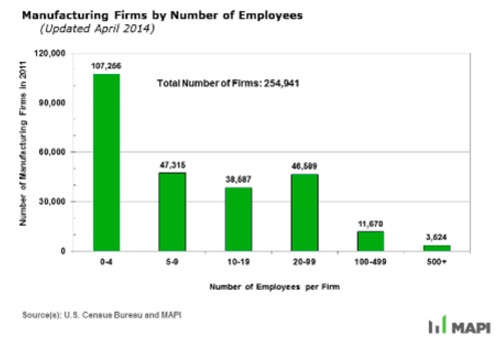
My recent discussions about adoption of Product Lifecycle Management in different segments of manufacturing industries made me think that status of PLM adoption haven’t changed for the last 10 years. PLM is limited to large manufacturing firms. I was looking for data to confirm it.
Earlier today, my attention was caught by Robotics and Automation News report, which speaks about progress PLM made so far, but also brings some interesting data point about existing install based on PLM vendors. Navigate to Top 10 product lifecycle management applications by install base Robotics and Automation News (press release) and read this short article:
The PLM system originated in the 1980s in the auto-making business but is now used across a wide range of industries, but still mostly traditional manufacturing sectors. The usage of PLM is growing, with several reports predicting the market for the software reaching approximately $65 billion to $75 billion by 2022. Most PLM installations are specifically customized to suit particular companies, which probably accounts for the significant revenues.
But the most interesting data point was list of vendors and their install base.
Siemens Teamcenter – 2,972 installations
Dassault Systèmes Enovia – 1,852
Oracle PLM – 1,396
Siemens Simatic Automation Designer (closest link match) – 1,075
PTC Windchill – 1,072
SAP PLM (closest match) – 779
Siemens PLM (closest match) – 734
Arena PLM – 184
Aras – 147
Infor Optiva – 33
The total number is 10244. It is a big number, but… how to make an assessment of PLM adoption? I wanted to bring some additional data points to match the data with the number of manufacturing companies to see a bigger picture.
Manufacturing Institute article brings statistics about manufacturing firms and their size in US. The following table shows the number of manufacturing firms in US classified by size. The data is for 2014.

You can see how data can be mapped to number of companies implemented PLM. We can make a rough assumption that PLM vendors are “bringing” about 35-40% of their product revenues in US. So, out of 10,000 companies, it brings us down to ~ 4000 manufacturing companies have implemented PLM solution. We can see on the chart above that it rought 10-15% of total 254,491 manufacturing companies in US.
What is my conclusion? PLM is still a tool and technology that must be “sold” and “implemented”. And it is exclusively used by large companies. Although, this is PLM status quo for many years, I can see now as a good time to start a change. It is a time to break some old “PLM rules”. It can open PLM for a broader adoption across large number of small manufacturing businesses, ETO and job shops. It is time to re-think basic PLM paradigms related to business transformation, business practices, cost and many others. Just my thoughts…
Best, Oleg
Want to learn more about PLM? Check out my new PLM Book website.
Disclaimer: I’m co-founder and CEO of openBoM developing cloud based bill of materials and inventory management tool for manufacturing companies, hardware startups and supply chain. My opinion can be unintentionally biased.
The post How many manufacturing companies are using PLM appeared first on Beyond PLM (Product Lifecycle Management) Blog.


Be the first to post a comment.